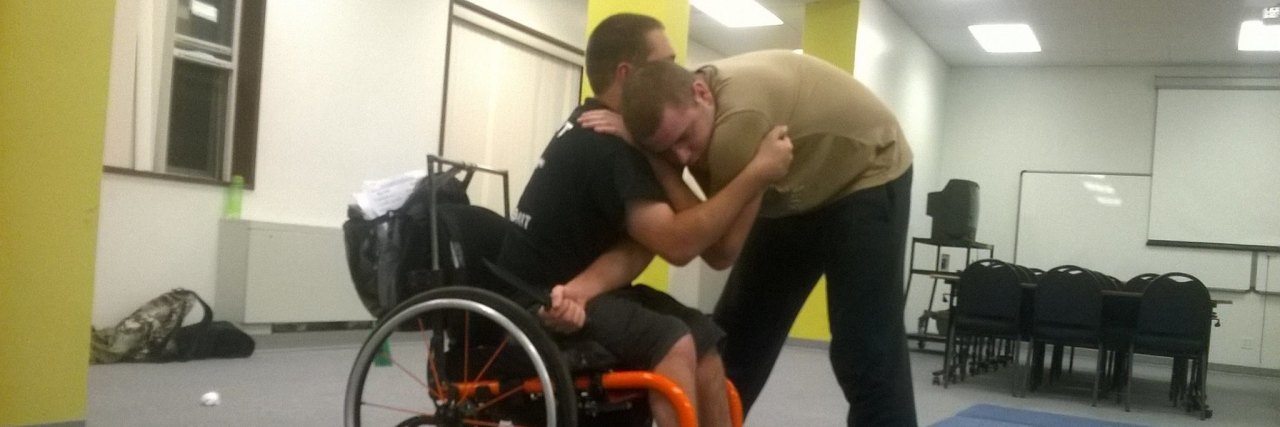Your life matters. Your health matters. Your happiness matters. You want to know what else matters? Your safety.
We have a plan of what to do when we get sick; we go to the doctor. If you want to be healthy and fit there are numerous ways for us to become the healthiest we can possibly be, such as eating healthy, avoiding processed foods, and doing strength training and conditioning to the extent of our abilities. But do we have a plan or know what to do in the event of a violent encounter? Most of us do not, and sometimes before we have a plan it’s too late.
My aim is not to scare people, but open their eyes enough to take action. I’ll be honest, I have been teaching safe-defense to the disability community for almost four years now, and I am just now starting to get people with all kinds of adaptive needs to express interest. It’s hard to get people to pay attention to this large hole in our personal wellness. Again, eating healthy, fitness and doing things to feed our souls is great. But when it comes to dealing with a mugger, an active shooter, house break in, hostage encounter etc. it seems like no one wants to have this honest and somewhat painful conversation.
We tend to think nothing violent will ever happen to us, but simply because it might not ever happen to us, does not mean that it doesn’t happen to others like us. Self-protection and self-defense is like having multiple forms of insurance should something ever happen. We never want something bad to happen to ourselves or anyone, but having a plan for our personal safety is no different than having an escape plan if our house or apartment catches on fire.
Let me break down briefly the difference between self-protection and self-defense:
Self-protection is simply knowing what is going on around you — knowing your surroundings, knowing where the exit doors are in a restaurant or theater. It’s knowing who’s around you; if someone or something gives you an uneasy feeling, listen to it. Even if it’s a false negative.
With the proper plan and execution, we can potentially evacuate a place or situation before things get truly violent. If we are home by ourselves and there is the possibility of someone breaking into our home, we can take precautions such as safeguarding the entrances, getting a protective dog, and communicating with neighbors and formulating a plan. We can do our best to prevent violence and reduce safety hazards for ourselves and others.
Self-defense, on the other hand, is going hands-on — fighting off an attacker trying to choke you, stab you, shoot you etc. Before we talk about using hands on skills, we have to talk about learning how to use verbal Judo, de-escalation to calm things down, complying and so on. If a douchebag wants your money or belongings, give it to them. It’s not worth getting hurt. If they leave, great — you can call the police after.
If things get hands on, there are things such as learning some basic Brazilian jiujutsu (BJJ) or even some basic striking. These may be options, depending on your arm/hand function. My favorite method of striking is a hammer fist, simply because that motion can be done in multiple positions. The hammer fist motion can also be used if you are using a small flashlight or tactical pen, which I highly recommend everyone carry. Obviously there are other simple ways to strike with these, but the circular hammer fist mission is the best.
Beyond that, if you are not comfortable carrying a gun or knife, a stun gun might be an option to consider. Lastly, utilizing a simple clinch position to bite and eye gouge is paramount in striking vital targets. Eyes, nose, throat, groin etc. No, you don’t have to be a lifelong martial artist like myself — but everyone, regardless of ability, should have a plan to handle a violent encounter before it happens. For our lives matter just as much as the next person.
Learn more at Adaptive Defense Methods.

